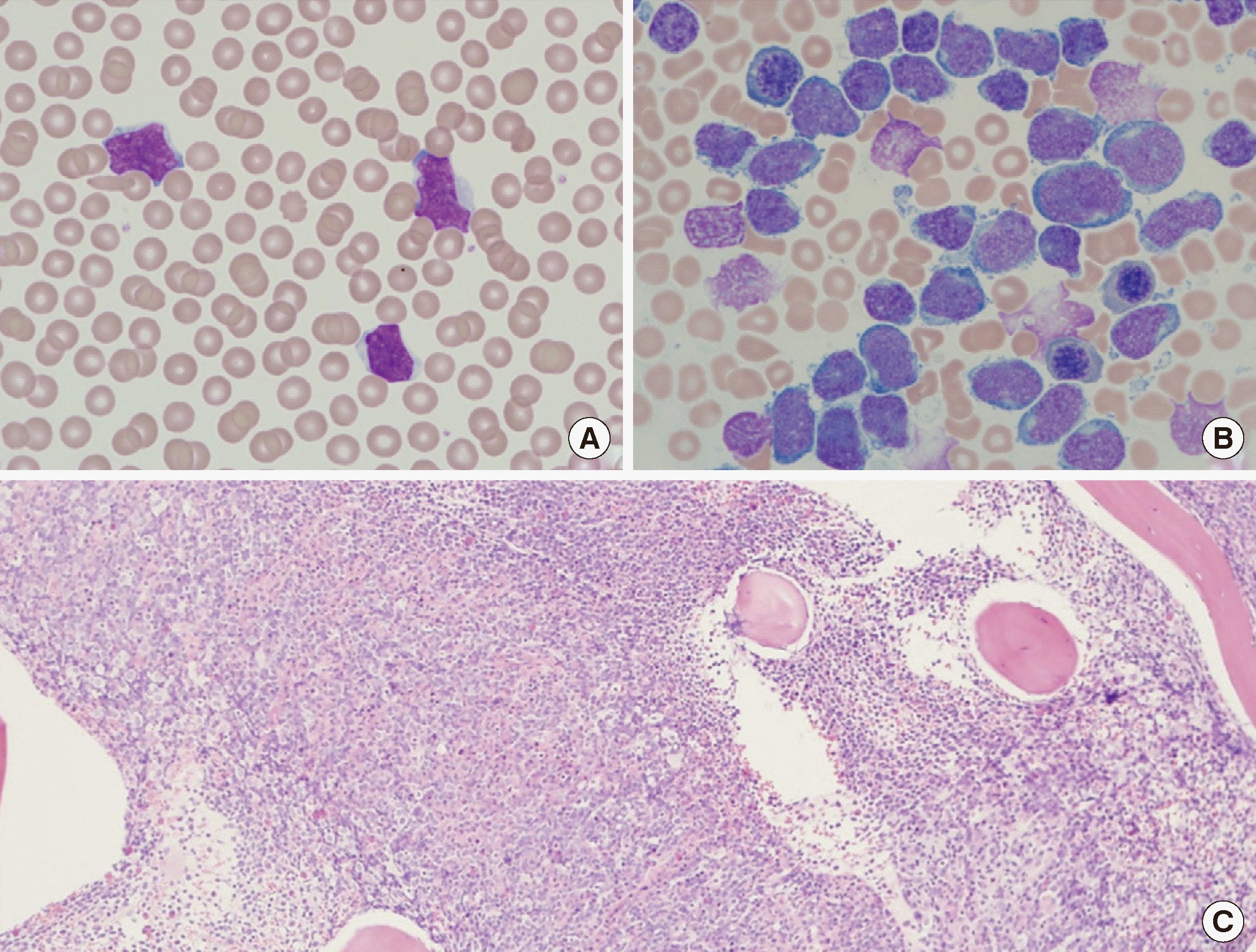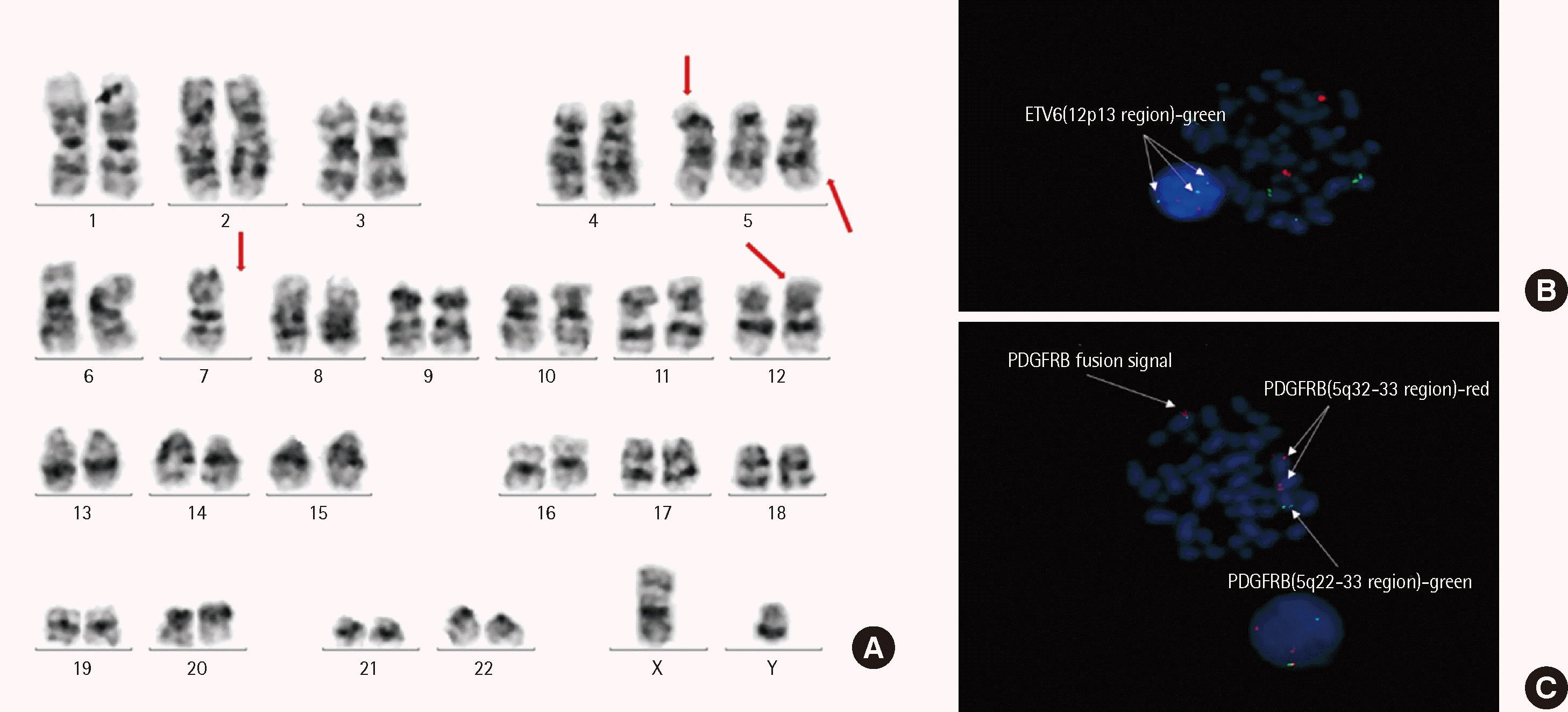1. Heim S, Mitelman F, editors. 2015. Cancer cytogenetics: chromosomal and molecular genetic aberrations of tumor cells. University of Lund. 4th ed. Wiley Blackwell;Lund, Sweden: p. 198–251. DOI:
10.1002/9781118795569.
2. Den Boer ML, van Slegtenhorst M, De Menezes RX, Cheok MH, Buijs-Gladdines JG, Peters ST, et al. 2009; A subtype of childhood acute lymphoblastic leukaemia with poor treatment outcome: a genome-wide classification study. Lancet Oncol. 10:125–34. DOI:
10.1016/S1470-2045(08)70339-5. PMID:
19138562.
3. Roberts KG, Pei D, Campana D, Payne-Turner D, Li Y, Cheng C, et al. 2014; Outcomes of children with BCR-ABL1-like acute lymphoblastic leukemia treated with risk-directed therapy based on the levels of minimal residual disease. J Clin Oncol. 32:3012–20. DOI:
10.1200/JCO.2014.55.4105. PMID:
25049327. PMCID:
PMC4162497.
4. Roberts KG, Li Y, Payne-Turner D, Harvey RC, Yang YL, Pei D, et al. 2014; Targetable kinase-activating lesions in Ph-like acute lymphoblastic leukemia. N Engl J Med. 371:1005–15. DOI:
10.1056/NEJMoa1403088. PMID:
25207766. PMCID:
PMC4191900.
5. Alaggio R, Amador C, Anagnostopoulos I, Attygalle AD, Araujo IBO, Berti E, et al. 2022; The 5th edition of the World Health Organization classification of haematolymphoid tumours: lymphoid neoplasms. Leukemia. 36:1720–48. DOI:
10.1038/s41375-022-01620-2. PMID:
35732829. PMCID:
PMC9214472.
6. Pozdnyakova O, Orazi A, Kelemen K, King R, Reichard KK, Craig FE, et al. 2021; Myeloid/lymphoid neoplasms associated with eosinophilia and rearrangements of PDGFRA,
PDGFRB, or
FGFR1 or with
PCM1-JAK2. Am J Clin Pathol. 155:160–78. DOI:
10.1093/ajcp/aqaa208. PMID:
33367495.
8. Roberts KG, Gu Z, Payne-Turner D, McCastlain K, Harvey RC, Chen IM, et al. 2017; High frequency and poor outcome of Philadelphia chromosome-like acute lymphoblastic leukemia in adults. J Clin Oncol. 35:394–401. DOI:
10.1200/JCO.2016.69.0073. PMID:
27870571. PMCID:
PMC5455698.
9. Reshmi SC, Harvey RC, Roberts KG, Stonerock E, Smith A, Jenkins H, et al. 2017; Targetable kinase gene fusions in high-risk B-ALL: a study from the Children's Oncology Group. Blood. 129:3352–61. DOI:
10.1182/blood-2016-12-758979. PMID:
28408464. PMCID:
PMC5482101.
11. Yadav V, Ganesan P, Veeramani R, Kumar VD. 2021; Philadelphia-like acute lymphoblastic leukemia: a systematic review. Clin Lymphoma Myeloma Leuk. 21:e57–65. DOI:
10.1016/j.clml.2020.08.011. PMID:
33485429.
12. Roberts KG, Morin RD, Zhang J, Hirst M, Zhao Y, Su X, et al. 2012; Genetic alterations activating kinase and cytokine receptor signaling in high-risk acute lymphoblastic leukemia. Cancer Cell. 22:153–66. DOI:
10.1016/j.ccr.2012.06.005. PMID:
22897847. PMCID:
PMC3422513.
13. Cools J, DeAngelo DJ, Gotlib J, Stover EH, Legare RD, Cortes J, et al. 2003; A tyrosine kinase created by fusion of the
PDGFRA and
FIP1L1 genes as a therapeutic target of imatinib in idiopathic hypereosinophilic syndrome. N Engl J Med. 348:1201–14. DOI:
10.1056/NEJMoa025217. PMID:
12660384.
14. Bidet A, Chollet C, Gardembas M, Nicolini FE, Genet P, Delmer A, et al. 2018; Molecular monitoring of patients with
ETV6-
PDGFRB rearrangement: Implications for therapeutic adaptation. Br J Haematol. 182:148–52. DOI:
10.1111/bjh.14748. PMID:
28485070.
15. Schwab C, Ryan SL, Chilton L, Elliott A, Murray J, Richardson S, et al. 2016;
EBF1-PDGFRB fusion in pediatric B-cell precursor acute lymphoblastic leukemia (BCP-ALL): genetic profile and clinical implications. Blood. 127:2214–8. DOI:
10.1182/blood-2015-09-670166. PMID:
26872634.






 PDF
PDF Citation
Citation Print
Print



 XML Download
XML Download